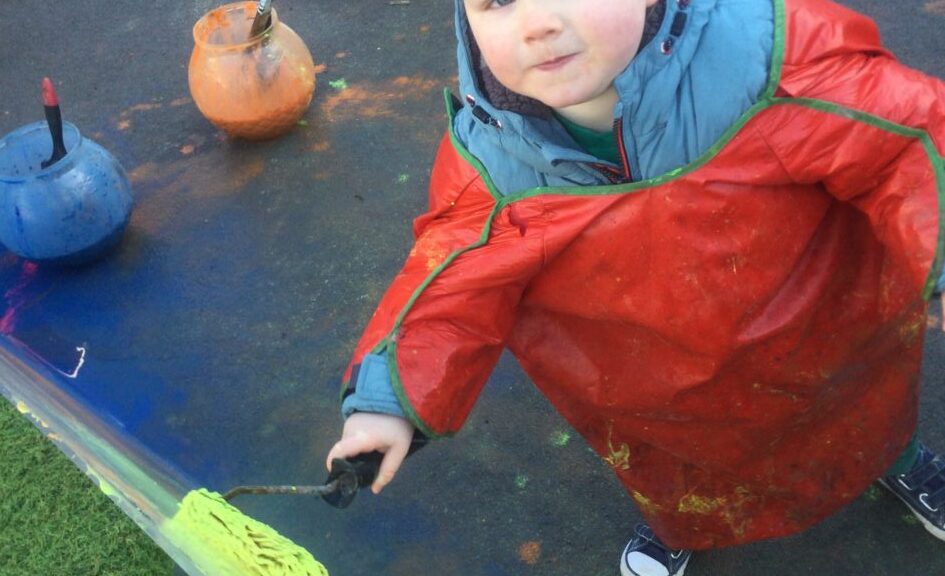Today in our gross motor art area, we used the translucent board to paint on. Before we started we got some powder paint mixed with water. We chose colours that represented nature. Green for the grass and trees, blue for the sky and orange for the sunsets.
We decided to use large pots today to make it a little different learning experience than indoor art. We wanted to extend our gross motor art and take our skills we learned in our studio painting area into a larger creative environment outdoors.
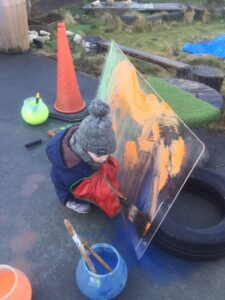
Inside our pots we had a selection of gross motor art utensils to select from. We had mops, rollers and large paint bushes.
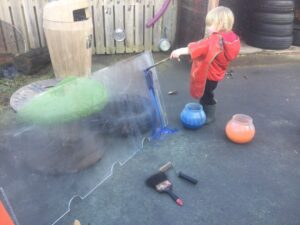
When we were making our creations we talked about what we could see in the outdoor environment and what was the inspiration for our art.
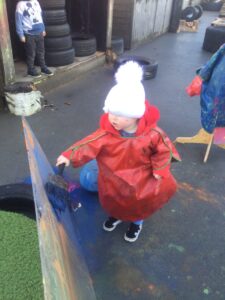
We each took a turn of painting and sometimes we worked along side our peers to create collaborative art.
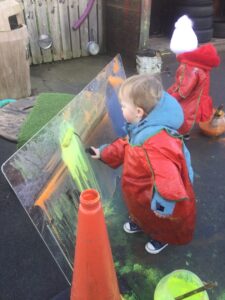
We used our gross motor skills as we had to bend and stretch to dip the large brushes/rollers into the tubs and use our arms/hands to help us control where we put the paint while using the large brushes.
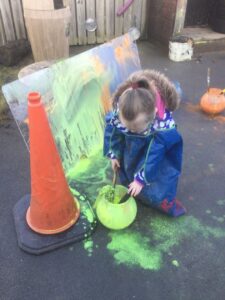
Once we had got the hang of our gross motor art painting we decided we wanted an even bigger space, so we used the nursery garden as our “natures canvas”. It looked nice and bright with all the colours we used.
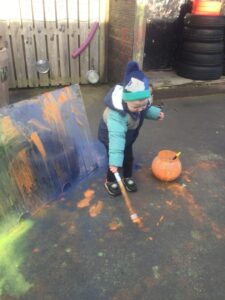
This is a great experience for our children to let there creativity take over with a large space and freedom to design. It is a learning experience that can be easily adapted to differentiate the learning between our 2-3 year olds and our 3-5year olds while simultaneously having fun along side each other with our older children role modelling for our younger ones.
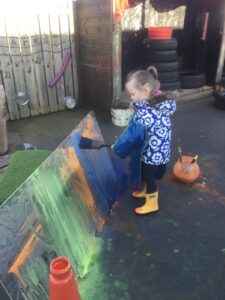
I wonder where our creative gross motor art journey will take us tomorrow. Feel free to have a look at our floor book next time you are in to see what we have been learning in our outdoor art area.
Article 29 – “you have the right to education which tries to develop your personality and abilities as much as possible and encourages you to respect other peoples rights and values and to respect the environment.” (UNCRC)

